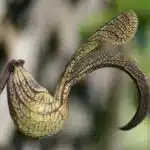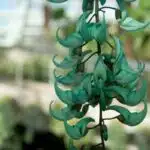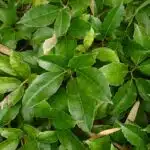Canary Creeper Vine is a popular plant among gardeners and horticulturists due to its vibrant yellow flowers and lush green foliage. This fast-growing vine is native to South America and is an excellent choice for those who want to add a touch of color to their gardens or outdoor spaces. With proper care and attention, this plant can thrive in different climates, making it a versatile option for all types of gardeners.
Growing Canary Creeper Vine requires some knowledge about the plant’s needs, including soil type, water requirements, and sunlight exposure. In this article, we will provide detailed information on how to grow this beautiful vine successfully. We will cover everything from planting and fertilizing to pruning and pest control, ensuring that you have all the tools necessary to cultivate healthy and robust Canary Creeper Vines in your garden. Whether you are new to gardening or a seasoned horticulturalist, this guide will help you achieve your desired results while serving others with a refreshing burst of color in your outdoor spaces.
Understanding The Basics Of Canary Creeper Vine
Canary creeper vine, also known as Tropaeolum peregrinum, is a beautiful and easy-to-grow annual vine that is native to South America. This plant produces delicate, trumpet-shaped flowers that come in shades of yellow, orange, and red. The canary creeper vine can grow up to 6-8 feet tall and is perfect for adding color to fences, trellises, or arbors.
Propagation techniques for the canary creeper vine include both seed and cutting methods. Seeds should be sown directly into the soil during the spring season when the weather has warmed up. Cuttings should be taken from mature vines during late summer or early fall and planted in well-draining soil with plenty of nutrients. It’s essential to keep the soil moist but not overly wet during propagation to avoid root rot.
Like any other plant, the canary creeper vine is susceptible to pests such as aphids, spider mites, and whiteflies. These pests can damage foliage and affect flowering by sucking out sap from stems and leaves. To prevent infestations, it’s crucial to ensure proper watering practices and maintain good airflow around plants. Additionally, using insecticidal soap or neem oil spray can help control pest populations if they become unmanageable. In the next section, we will discuss how to choose the right location for your vine to thrive.
Choosing The Right Location For Your Vine
Sunlight requirements for canary creeper vine include full sun to partial shade, with best flowering results in full sun. Watering needs for canary creeper vines are regular and consistent for optimal growth; however, too much water can lead to rot and root damage. The ideal soil type for canary creeper vines should be well-draining, fertile, and organic with a soil pH that ranges from 6.1 to 8.5. Fertilizer may be beneficial to supplement soil nutrients, however, over-fertilizing can damage the plant. Pruning and trellising are recommended for canary creeper vines as they can grow up to 30 feet in length. Lastly, canary creeper vines are a great choice for covering a fence, arbor, wall, or trellis.
Sunlight Requirements
Proper sunlight requirements are vital for the growth of canary creeper vine. As a horticulturalist, I recommend that you choose a location that receives full or partial sunlight throughout the day. Ensure that your plant gets at least six to eight hours of sunlight every day so that it can thrive and produce an abundance of blooms. If you do not have access to natural light, you can supplement with indoor lighting. However, note that indoor lighting may not provide the full spectrum of light required for optimal growth.
Canary creeper vine also has moderate shade tolerance, making it ideal for planting in areas where there is partial shade. A location with dappled or filtered shade will allow the plant to grow and develop without being exposed to harsh sunlight. Additionally, it is important to remember that too much direct sun exposure may lead to leaf scorching or wilting. Therefore, if your area experiences excessive heat during summertime, consider planting the vines in an area with morning sun exposure and afternoon shade.
In conclusion, choosing the right location is crucial for growing healthy and bountiful canary creeper vines. When selecting a spot, make sure that your plant receives adequate sunlight while also ensuring moderate shade tolerance. By following these guidelines, you will be able to create an environment where your plants can thrive and produce beautiful blooms all season long!
Watering Needs
When it comes to choosing the right location for your canary creeper vine, sunlight is not the only factor that you need to consider. Proper watering is also crucial for the healthy growth of your plant. One of the most important aspects of watering is frequency. Canary creeper vines require regular watering to maintain soil moisture levels, especially during hot and dry periods. The frequency of watering will depend on various factors such as weather conditions, soil type, and drainage.
To ensure that your canary creeper vine has adequate water supply, you should aim for a consistent moisture level in the soil. The soil should be moist but not waterlogged since overwatering can lead to root rot and other fungal diseases. Additionally, you should consider the soil’s moisture retention capacity when selecting a location for planting your vine. Soil with good moisture retention will help maintain an optimal moisture level in the soil, reducing the need for frequent watering.
In summary, proper watering is essential to ensure that your canary creeper vine thrives in its new location. Watering frequency and soil moisture retention are two critical factors that you need to consider when selecting a site for planting your vines. With adequate water supply and optimal growing conditions, your canary creeper vines will produce beautiful blooms throughout the season!
Soil Type
When it comes to choosing the right location for your canary creeper vine, soil type is another crucial factor to consider. The best soil for canary creeper vines is well-draining soil that is rich in organic matter. Soil preparation before planting is also essential to ensure optimal growing conditions for your vine. You should loosen the soil and incorporate compost or other organic matter into it to improve its texture and fertility.
The pH of the soil is another critical factor that you need to consider when selecting a site for planting your canary creeper vine. The ideal pH range for these vines is between 6.0 and 7.5. If the soil’s pH level is too low or too high, nutrient uptake may be affected, leading to stunted growth or poor flowering performance.
In summary, selecting the best soil and preparing it before planting are crucial steps in ensuring that your canary creeper vines thrive in their new location. Well-draining soil rich in organic matter with an optimal pH level will provide your vines with the necessary nutrients and growing conditions they need to produce beautiful blooms throughout the season.
Preparing The Soil For Planting
Before planting a canary creeper vine, it is crucial to prepare the soil adequately. Soil testing is essential as it helps identify nutrient deficiencies and pH levels, which are critical factors in plant growth. A soil test will determine the pH level of your soil and its nutrient content, allowing you to amend it accordingly.
Once you have determined the state of your soil through testing, you can begin amending techniques. One common method is adding organic matter like compost or manure. Organic matter helps improve soil structure by increasing its ability to retain water and nutrients while also improving drainage.
Another technique for amending soil is using fertilizers. Fertilizers can be added to provide essential nutrients that may be lacking in the soil. However, it’s important not to over-fertilize as this can lead to an imbalance in nutrient levels and cause harm to the plant.
- Did you know that planting cover crops like clover or vetch before planting your vines can help improve soil health?
- Have you considered using natural pest control methods such as companion planting with marigolds or basil?
- Have you tried using mulch around your plants? Mulch helps keep moisture in the ground while also preventing weed growth.
Preparing your soil correctly is crucial for growing healthy and productive plants. With proper amending techniques, you can ensure that your canary creeper vine has all the nutrients it needs for optimal growth. In the next section, we’ll discuss how to properly plant your newly prepared bed for your canary creeper vine.
Planting Your Canary Creeper Vine
As we prepare the soil for planting, we must also consider garden design and companion planting. The canary creeper vine is a stunning addition to any garden, but it requires proper planning to thrive. When designing your garden, think about where you want to plant your vine. It needs a sturdy trellis or support structure to climb on, so make sure it has enough space to grow vertically.
Companion planting is another important consideration when growing canary creeper vines. These plants benefit from being planted near other flowering species, such as marigolds and petunias. These flowers attract pollinators like bees and butterflies that help ensure healthy growth and abundant blooms. Additionally, they also help keep pests away from our vines.
Now that we have covered garden design and companion planting let’s move on to planting our canary creeper vine. Once we have chosen the perfect spot with adequate light and support structures in place, it’s time to plant! Dig a hole slightly larger than the root ball of the plant and gently place it in the soil, making sure not to damage any of the roots. Add compost or organic matter around the base of the plant to provide additional nutrients for growth.
As we move forward with our canary creeper vine growth journey, it’s important to remember watering and moisture requirements are vital for your plant’s success. Overwatering can cause root rot while underwatering will cause wilting leaves and stunted growth. Make sure you water consistently every week during dry spells or droughts but always check soil moisture levels before watering again. By following these simple steps, you’ll be rewarded with a beautiful blooming vine that adds color and interest year after year!
Watering And Moisture Requirements
- Canary Creeper Vine requires regular watering, typically twice a week during the growing season and once per week during the dormant season.
- Humidity should be maintained at an average of 50-60% relative humidity to ensure proper growth of the Canary Creeper Vine.
- When watering the Canary Creeper Vine, the soil should be moist but not soggy; overwatering can cause root rot.
- A slow, deep watering technique should be used to ensure the soil is evenly moist throughout and that the root system is being reached.
- When the top 2-3 inches of soil is dry, the Canary Creeper Vine should be watered.
- Soil moisture should be regularly tested with a moisture meter to ensure the Canary Creeper Vine is receiving the proper amount of water.
Water Frequency
As a horticulturalist, it is important to understand the watering requirements of the canary creeper vine. This delicate plant requires proper care and attention to thrive in your garden. The watering schedule for the canary creeper vine is critical for its survival.
To ensure that your canary creeper vine thrives, you must maintain an appropriate watering schedule. The soil moisture should be checked regularly to determine if watering is necessary. Overwatering or underwatering can have adverse effects on the growth of this vine. It is recommended that you water the plant twice a week during hot weather and once a week during cooler periods.
It is essential to remember that soil moisture plays a significant role in the growth of the canary creeper vine. When watering, make sure that you moisten the soil thoroughly without leaving it soggy. Overwatering can cause root rot, while underwatering may cause wilting and stunted growth. Maintaining an adequate level of soil moisture ensures that your canary creeper vine will thrive and produce beautiful blooms.
Humidity
As a horticulturalist or master gardener, it is essential to understand the role of humidity in the watering and moisture requirements of plants. Humidity refers to the amount of water vapor present in the air surrounding a plant. Proper humidification provides several benefits to plants, including reduced water loss through transpiration, improved growth rate, and increased resistance to pests and diseases.
Maintaining adequate levels of humidity is especially crucial for plants that require high levels of moisture. The canary creeper vine thrives in tropical and subtropical climates with high levels of humidity. However, excessive humidity can also pose a threat to this delicate plant. Dealing with excessive humidity requires proper ventilation and drainage systems to prevent fungal growth and other related diseases.
In conclusion, understanding how humidity affects your plants’ watering and moisture requirements is vital for their survival. As a horticulturalist or master gardener, you must monitor your canary creeper vine’s moisture levels regularly while considering the relative humidity in your area. By properly managing your plant’s watering and moisture requirements, you will ensure its optimal health and beauty.
Soil Moisture
As a horticulturalist or master gardener, you must understand the importance of soil moisture in your plants’ growth and development. Soil moisture refers to the amount of water held in the soil, which is essential for plant survival. A plant’s roots absorb water from the soil, and when there is inadequate soil moisture, plants can wilt or even die. Therefore, it is crucial to maintain proper levels of soil moisture to ensure optimal plant health.
One way to maintain adequate soil moisture levels is through mulching techniques. Mulch helps to retain water in the soil by reducing evaporation rates and preventing water runoff. It also protects the roots from extreme temperatures, providing an optimal environment for root growth. Different types of mulch materials such as leaves, straw, wood chips can be used depending on your plants’ needs.
Proper drainage is also essential in maintaining healthy soil moisture levels. Poor drainage can lead to waterlogged soils that can suffocate or rot plant roots. To avoid this problem, ensure that your planting areas have good drainage systems such as adding drainage tiles or using raised beds with adequate spacing between them. By properly managing your soil moisture levels through mulching techniques and proper drainage systems, you will ensure your plants thrive and flourish.
Providing Adequate Sunlight
Canary creeper vines thrive in full sunlight, but it is crucial to provide them with adequate shade during the hottest part of the day. If your plant receives too much direct sunlight, it can quickly dry out and even die. Therefore, it is essential to monitor the amount of sun exposure your canary creeper vine gets throughout the day.
If you live in an area where natural light is limited, using artificial light can be a great solution for growing canary creeper vines indoors. However, ensure that you place your plant close enough to the light source as these plants need a lot of bright light to grow properly. You may also want to consider investing in full-spectrum lights that mimic natural sunlight for optimal growth.
Providing shade for your vine is equally important as exposing it to adequate sunlight. You can create shade by providing cover or planting companion plants nearby that can offer some relief from the harsh rays of the sun. Shade cloth or mesh netting are also effective solutions that provide ample protection while allowing sufficient amounts of light to reach your plant’s leaves. By providing proper sun exposure and shade for your canary creeper vine, you are on track towards a healthy and thriving plant!
To ensure optimal growth, fertilizing your vine is a crucial step that should not be overlooked. By providing your plant with adequate nutrients, you are giving it the energy it needs to produce lush foliage and blooms. In the next section, we will discuss how often you should fertilize your canary creeper vine and what type of fertilizer works best for this particular species.
Fertilizing Your Vine For Optimal Growth
To achieve optimal growth for your canary creeper vine, fertilization is key. Using organic fertilizers is highly recommended as it provides the necessary nutrients without causing any harm to the environment or your plant. These types of fertilizers are made from natural sources such as compost, manure, and bone meal. They also help improve soil texture and promote healthy microbial activity.
The best time to fertilize your canary creeper vine is during its active growing season which typically falls between spring and summer. It’s important to follow the instructions on your fertilizer package carefully as over-fertilization can lead to burnt leaves and stunted growth. Generally, it’s recommended to apply fertilizer once a month during the growing season.
Fertilizing your canary creeper vine regularly ensures that it receives the necessary nutrients for optimal growth and flowering. Doing so not only improves its overall health but also enhances the beauty of your garden or outdoor space. With proper fertilization, you’ll be able to enjoy a lush and vibrant vine that adds life and color to any landscape.
As you continue caring for your canary creeper vine, pruning and training will also play an important role in its growth and development. By properly pruning and training your vine, you can control its shape, size, and direction of growth while also promoting healthier foliage production.
Pruning And Training Your Vine
After fertilizing your canary creeper vine, it’s important to focus on pruning and training techniques to ensure optimal growth. Pruning is the process of removing dead or overgrown parts of the vine to promote new growth and increase overall health. Training, on the other hand, involves manipulating the vine to grow in a specific direction or shape.
When it comes to pruning techniques for canary creeper vines, there are a few key things to keep in mind. First, it’s important to prune regularly throughout the growing season, as this will help prevent the vine from becoming too dense or tangled. Second, be sure to use clean and sharp tools when pruning, as this will minimize damage to the plant and reduce the risk of disease. Finally, pay attention to the type of growth you’re pruning – for example, if you want your vine to produce more flowers, focus on removing older stems that have already flowered.
In terms of training methods for canary creeper vines, there are several options depending on your desired outcome. For example, you might choose to train your vine up a trellis or other support structure in order to create height and vertical interest. Alternatively, you could train it along a fence or wall for a more horizontal effect. Whatever method you choose, be sure to start training early in the growing season so that the vine has time to adjust and grow into its new shape.
Controlling Pests And Diseases
The canary creeper vine is a beautiful plant that adds a touch of vibrancy to any garden. Just like all other plants, it is susceptible to various pests and diseases, which could lead to stunted growth or even death if not controlled. Therefore, controlling pests and diseases is an essential aspect of growing the canary creeper vine.
One natural remedy for controlling pests and diseases in your canary creeper vine is companion planting. Companion planting involves growing different plants together to benefit each other by repelling pests or attracting beneficial insects. For instance, planting marigold near your canary creeper vine helps to keep aphids away.
If companion planting isn’t enough, you might need to resort to chemical treatments. However, be cautious while choosing chemicals as some might damage your plant more than the pests. Always read the label before applying any chemical treatment and ensure that it’s suitable for use on the canary creeper vine.
- Regularly inspect your plant for signs of pest infestation such as wilting leaves or holes.
- Prune off infected parts of your plant regularly and dispose of them well away from your garden.
- Keep your garden clean by removing debris such as fallen leaves or dead branches.
- Water your plant adequately but avoid overwatering as this could lead to root rot.
- Ensure that you are using high-quality soil when planting the canary creeper vine.
To support the growth of the canary creeper vine, you’ll need trellises or stakes. These provide structure and support while allowing room for growth upwards rather than outwards. When selecting trellises or stakes, consider their durability and sturdiness, given that they will be supporting a heavy plant with time. With proper care and attention, your canary creeper vine will thrive, adding beauty and color to your garden for years to come.
Supporting Your Vine With Trellises Or Stakes
Vines are known for their climbing ability and can grow vigorously in the right conditions. Canary creeper vines are no different, and as such, they require support as they grow. Trellises or stakes help support the vines’ weight and prevent them from falling over, which can cause damage to the plant. There are different types of trellises or stakes that you can use to support your canary creeper vine.
Trellises come in various shapes and sizes, and they offer a stable structure for your vine to climb on. The two main types of trellises are wall-mounted and freestanding. Wall-mounted trellises attach securely to a wall or fence, while freestanding ones stand independently of any other structure. You can also create your own trellis using materials such as bamboo poles or wire mesh. Whichever type of trellis you choose, make sure it is sturdy enough to support the weight of your growing vine.
DIY stakes are another option for supporting your canary creeper vine. These stakes are easy to make and provide excellent support for young plants. Bamboo poles or wooden dowels work well as stakes, but you could also use metal rods or PVC pipe if preferred. Hammer the stake into the ground near the base of the plant and tie it loosely with garden twine as it grows taller. Make sure not to tie it too tightly to allow room for growth.
As a responsible gardener, providing adequate support for your plants is paramount for their success. Types of trellises include wall-mounted and freestanding ones, each offering sturdy structural supports that hold up even under heavy loads. DIY stakes made from bamboo poles or wooden dowels also work just fine when tied loosely with garden twine around young plants as they grow taller over time. With proper care and attention during their early years in life, these beautiful vines will thrive in gardens all year round! In the next section, we will discuss propagating your vine through cuttings, a crucial step in expanding your garden.
Propagating Your Vine Through Cuttings
As the saying goes, “a cutting from a canary creeper vine is a gift that keeps on giving.” Propagating your vine through cuttings can be an excellent way to expand your garden or share with friends and family. With proper care and attention, you can enjoy the benefits of cuttings for years to come.
To start propagating your vine, select healthy stems from the parent plant. Choose stems that are at least six inches long and have several leaves attached. Cut the stem at a 45-degree angle using sharp pruning shears to prevent damage to the plant. Remove any leaves from the bottom third of the cutting to encourage root growth.
Common mistakes in propagation include using dull pruning shears, selecting unhealthy stems, and not providing enough water or sunlight for the new cutting. To avoid these mistakes, be sure to use sharp tools, choose strong stems with healthy foliage, and provide adequate light and moisture for your new plant to thrive.
Incorporating cuttings into your garden can be a rewarding experience. Once your cuttings have rooted and begun to grow, you can look forward to harvesting and using the flowers in various ways. In the next section, we will explore how you can harvest and use the beautiful blooms of your canary creeper vine.
Harvesting And Using The Flowers
Canary creeper vine is a beautiful plant that produces vibrant yellow flowers, which can be harvested for use in floral arrangements. When harvesting the flowers, it is important to wait until they are fully open before cutting them from the vine. This will ensure that the flowers are at their peak freshness and have the most vibrant color.
Using canary creeper in floral arrangements is a great way to add a pop of color and texture to your designs. The long, trailing vines of this plant make it perfect for use in hanging baskets or cascading bouquets. Additionally, canary creeper is a favorite among pollinators such as bees and butterflies, so incorporating it into your garden design can help attract these beneficial insects.
One of the benefits of growing canary creeper vine is its ability to support pollinators. The nectar-rich flowers provide an important food source for bees and butterflies, which play an essential role in pollinating our crops and sustaining our environment. By planting canary creeper in your garden, you are not only adding beauty to your landscape but also helping to support these vital species.
As you enjoy the beauty of your canary creeper vine throughout the growing season, it’s important to start thinking about how you will overwinter your plant when temperatures begin to drop. In the next section, we’ll discuss some tips for protecting your vine during the colder months so that you can continue to enjoy its beauty year after year.
Overwintering Your Vine
After harvesting the flowers of your canary creeper vine, it’s time to start thinking about how to care for your plant during the winter months. As a tropical plant, canary creeper vines are not cold-hardy and require protection from frost and freezing temperatures. If left unprotected, the roots may die, and the plant will not survive until next spring.
To protect the roots of your canary creeper vine during the winter months, there are a few things you can do. First, consider mulching around the base of the plant with a layer of organic material like straw or leaves. This will help insulate the soil and keep it from freezing. Second, you may want to consider adding a protective covering over your plant, such as burlap or frost cloth. This will help shield your vine from harsh winds and cold temperatures.
Winter care for your canary creeper vine is essential if you want to enjoy its beautiful blooms again next year. By taking these steps to protect its roots and provide insulation against freezing temperatures, you’ll be able to ensure that your plant survives until spring. With proper care and attention during the winter months, you’ll be rewarded with a healthy and vibrant vine come springtime.
Moving forward into troubleshooting common problems with growing canary creeper vines, it’s important first to recognize what issues may arise during their growth cycle. Often times these issues stem from environmental factors such as temperature changes or an imbalance in soil nutrients. By understanding common problems that arise when growing this unique and beautiful plant, you’ll be better equipped to address any issues quickly and efficiently before they cause lasting damage to your canary creeper vine.
Troubleshooting Common Problems
Pruning canary creeper vines is necessary to ensure healthy growth and to maintain a desirable shape. For best results, pruning should be done after flowering has ended. Proper watering is essential for optimal growth of canary creeper vines. The soil should remain consistently moist, but not soggy. Fertilizing should be done in the spring, with a balanced fertilizer containing nitrogen, phosphorus, and potassium. Additional fertilizing can be done every four to six weeks during the growing season. Too much fertilizer can cause damage to the canary creeper vine, so it should be used sparingly.
Pruning
As a horticulturist or master gardener, pruning is an important aspect of growing healthy canary creeper vines. Pruning involves removing damaged, dead, or diseased parts of the plant to promote growth and prevent further damage. It also helps maintain the desired shape and size of the vine.
When pruning canary creeper vines, it is important to use sharp and clean tools to avoid damaging the plant. The best time to prune is during the dormant period in late winter or early spring. It is essential to remove any weak or crossing branches as they can hinder growth and lead to disease. Avoid over-pruning as it can weaken the plant and reduce its ability to produce flowers.
To avoid common mistakes while pruning canary creeper vines, it is important not to prune too late in the growing season as this may stimulate new growth that will not have enough time to mature before winter. Another mistake is pruning too much foliage which reduces the plant’s ability to photosynthesize and produce food for itself. Finally, do not neglect regular maintenance pruning throughout the growing season as this ensures that any damaged or diseased parts are removed promptly.
In conclusion, proper pruning techniques are essential for promoting healthy growth in canary creeper vines. By following these tips for pruning and avoiding common mistakes such as over-pruning or neglecting regular maintenance throughout the growing season, gardeners can enjoy a beautiful display of flowers from their canary creeper vine year after year.
Watering
Another aspect of growing healthy canary creeper vines is maintaining proper watering practices. As a horticulturist or master gardener, it is essential to understand the watering needs of this plant to avoid common problems such as root rot or leaf wilting. Watering frequency and soil moisture levels play a crucial role in the growth and health of canary creeper vines.
The frequency of watering can vary depending on the climate, soil type, and time of year. In general, it is best to water deeply but infrequently rather than shallowly and frequently. This encourages the roots to grow deeper into the soil, which helps the plant withstand drought conditions better. It is also important to monitor soil moisture levels regularly using a moisture meter or by checking the top inch of soil for dryness. Overwatering can lead to waterlogged roots that are prone to disease, while underwatering can cause stress on the plant and reduce its ability to produce flowers.
To troubleshoot common problems related to watering, gardeners should pay close attention to signs of overwatering or underwatering such as yellowing leaves or wilting foliage. If these symptoms appear, adjust your watering practices accordingly by either reducing or increasing the frequency of watering. It may also be helpful to incorporate organic matter into the soil, such as compost or mulch, which helps retain moisture and improve drainage.
In summary, maintaining proper watering practices is essential for promoting healthy growth in canary creeper vines. By understanding the watering needs of this plant and monitoring soil moisture levels regularly, gardeners can prevent common problems such as root rot or leaf wilting. Troubleshooting common problems related to watering involves adjusting your watering practices based on signs of overwatering or underwatering while incorporating organic matter into the soil for improved moisture retention and drainage.
Fertilizing
After addressing watering practices, another crucial aspect of growing healthy canary creeper vines is proper fertilization. Fertilizers provide essential nutrients that the plant needs for growth and development. Gardeners must understand the different types of fertilizers available and the ideal frequency of fertilization to ensure optimal plant health.
There are two main types of fertilizers: organic and synthetic. Organic fertilizers, such as compost or manure, release nutrients slowly over time and improve soil quality. Synthetic fertilizers, on the other hand, are faster-acting and provide a quick boost of nutrients to plants. However, they may also contain harmful chemicals that can damage soil health in the long run.
The frequency of fertilization depends on various factors such as soil type, weather conditions, and plant growth stage. In general, canary creeper vines benefit from regular fertilizer applications during their active growing season. Gardeners should avoid over-fertilizing as it can lead to salt buildup in the soil and cause root damage. Regularly monitoring plant growth and nutrient deficiencies can help determine the appropriate frequency of fertilization needed for optimal plant health.
Enjoying The Beauty Of Your Canary Creeper Vine
Once your canary creeper vine has grown to its full potential, it’s time to enjoy its beauty. There are several ways to showcase this plant indoors and outdoors. Here are some tips for displaying your canary creeper vine inside:
- Use a trellis or wall-mounted basket to display the vine vertically.
- Hang the plant in a well-lit area, such as near a window.
- Incorporate the vine into floral arrangements or use it as a centerpiece.
When incorporating your canary creeper vine into your garden design, there are many creative ways to showcase its beauty alongside other plants and flowers. Consider these ideas:
- Plant the vine at the base of a tree or along a fence for added vertical interest.
- Mix with other flowering vines such as morning glories or clematis for a striking effect.
- Use as ground cover in areas where grass is difficult to grow.
With proper care and attention, your canary creeper vine will thrive and add beauty to any space it inhabits. Experiment with different display options and garden designs to find what works best for you and your unique style.
Conclusion
Canary Creeper Vine is a lovely addition to any garden, with its vibrant yellow flowers and delicate vines. To grow this beautiful plant successfully, it is crucial to understand the basics of its care and requirements. Selecting the appropriate location, preparing the soil correctly, and providing adequate moisture are all vital components of growing this vine.
Once established, Canary Creeper Vine requires minimal maintenance and can provide an abundance of stunning flowers for harvesting. Overwintering your vine properly will ensure that it returns healthier and more robust each year. Troubleshooting common problems such as pests or diseases is essential to maintaining your plant’s health and beauty.
In conclusion, growing Canary Creeper Vine is a rewarding experience that can bring joy to any gardener or horticulturalist alike. With proper care and attention to detail, this beautiful plant can flourish in any garden setting, adding a touch of sunshine with its cheerful blooms. Take pride in your gardening skills by cultivating this delightful vine and enjoy the gratification it brings through its captivating allure.
Image Credits
- “Laurisilva Forrest” by Neneonline (featured)








![How To Grow And Care For Corkscrew Vine 10 Strophanthus preussii [Corkscrew Flower, Poison Arrow Vine, Spider Tresses, Tassel Vine] Apocynaceae](https://green-life.blog/wp-content/uploads/2023/04/KW5aFOG5S3jq-150x150.jpg.webp)




















